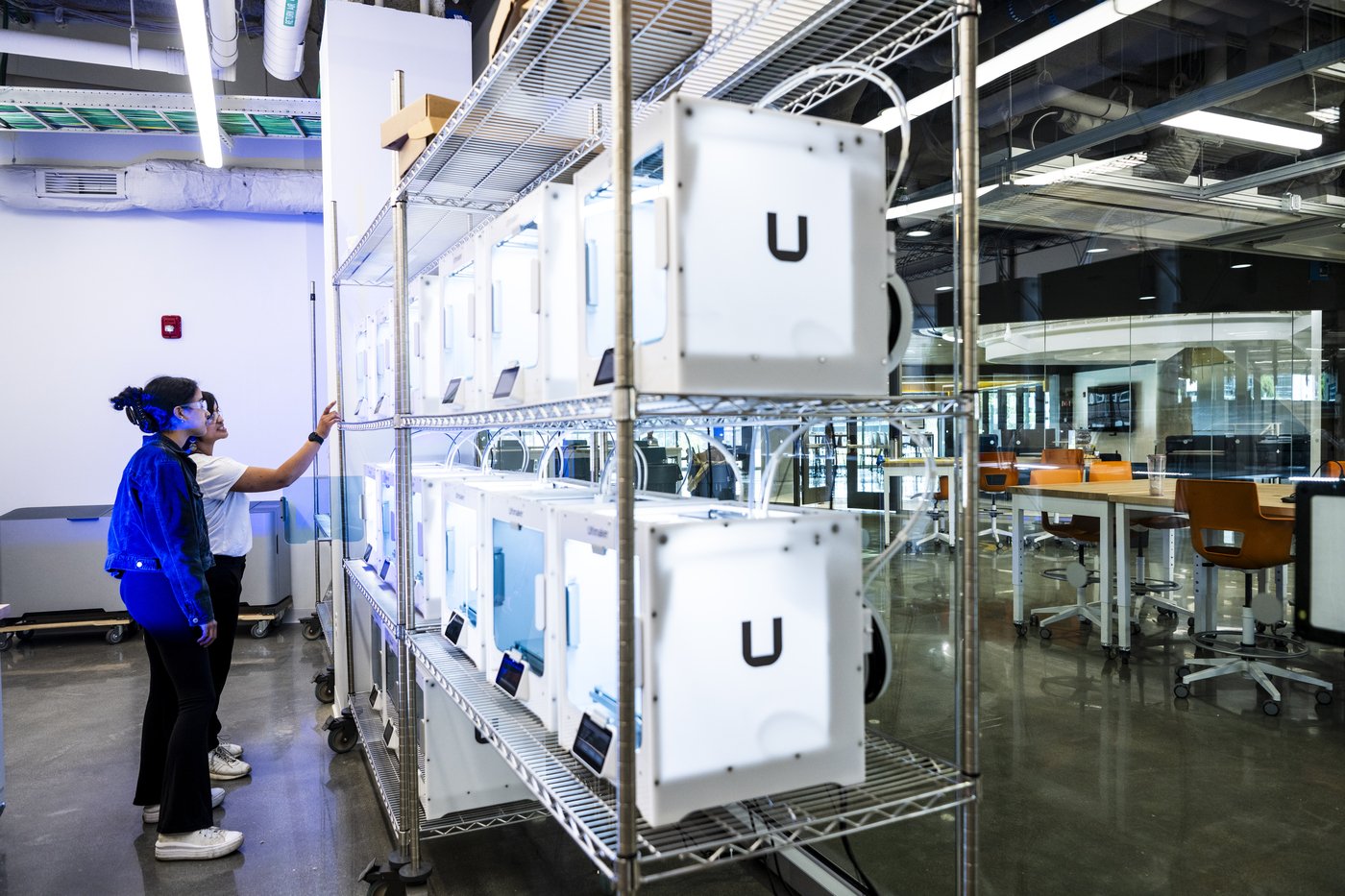
ChallengeHow could Northeastern University establish a 16,000 sq/ft makerspace that was inclusive, safe, and equipped to support 20,000 students while fostering collaboration, community, and personalized experiences?
Janos’ main challenge in launching the EXP Makerspace at Northeastern University was creating a world-class 16,000 sq/ft space that catered to the diverse needs of 20,000 students across multiple disciplines. Because the Maker Space at EXP was a new presidential and provost-mandated venture under construction during Janos’ tenure, he needed to work fast to guarantee that the space would be inclusive, safe, and functionally equipped while also ensuring the venture would be successful in supporting a wide variety of creative and interdisciplinary projects, leadership demanded. In addition, because the Maker Space at EXP would absorb hundreds of students daily, his challenge was to provide a physical space, establish a strong community culture, foster collaboration, and ensure safety for each participant while giving them a personalized experience.
ProcessBuilding an Inclusive, Student-Driven Makerspace at EXP
The process began with a thorough planning phase, focusing on creating a growth strategy for the Maker Space at EXP and building a community around it. Throughout the process, a strong emphasis was placed on Justice, Equity, Diversity, and Inclusion (JEDI) principles to ensure the space was welcoming and accessible to all students.
Key actions included outreach to student groups, faculty, and departments to ensure widespread buy-in. In addition, Janos and his team developed a comprehensive safety and operational plan, collaborating with the campus police, environmental health, and other stakeholders to establish safety protocols.
Janos established the ‘EXPlorer” program to foster student-driven culture, collaboration, and innovation. EXPlorers were student workers trained in technical and leadership skills to act as ambassadors between all 20,0000 NU students, nine Boston-based colleges, and global campuses. The EXPlorers were given deep access and creative control over the operations and intuitions in the Maker Space at EXP. This was crucial in creating authentic ownership that would lead to community-driven events, social spaces, and mentorship programs that would form Maker Space at EXP's unique student-centric interdisciplinary environment.
Janos led weekly ideation sessions with the Northeastern capital project management team, and architects/engineers helped shape the vision, while student and EXPlorer engagement significantly shaped the design and structure for the physical and digital components of the space, including the identity design, experience design, and website.
SolutionA collaborative, inclusive approach that integrated diverse groups, created a robust ecosystem, and developed a flexible, safe space at the Makerspace at EXP to support innovation, creativity, and community needs.
Solutions emerged through Janos’ collaborative, equitable, and iterative approach. The key was integrating various groups across Northeastern University, ensuring equitable access, and building a robust ecosystem to support the massive potential innovation, creativity, and personal development the space would produce. The community-building aspect was particularly successful, with initiatives such as the Student Advisory Team, outreach to affinity groups, and partnerships with key stakeholders like the Center for Advanced Teaching and Learning and MOSAIC.
He successfully established the Maker Space at EXP as a world-class multidisciplinary hub with thoughtful space management and pedagogical initiatives that could support a wide range of academic and personal passion projects. Critically, Janos used his background in creative strategy design to ensure the Maker Space at EXP would be adaptable to creativity and innovation while being flexible enough to adapt to the full scope of community needs.
Janos and his team also developed a comprehensive safety infrastructure and a physical space with designated areas for various types of work, including a bio-maker space and woodshop, while integrating necessary safety training. The creation of an accessible kitchen space further promoted the idea of a welcoming, inclusive environment.
learningsThrough the launch of the Maker Space at EXP, Janos refined the importance of a positively audacious, flexible, and adaptive approach when designing and dealing with complex, multifaceted projects. Constant communication with stakeholders, including students, faculty, and campus leadership, was essential for navigating differing needs and expectations. The process reinforced the importance of prioritizing safety and inclusivity in every aspect of the space’s development, from physical design to staff training and engagement with the broader university community from the beginning and the need for continuous engagement with the community to ensure that the Maker Space at EXP truly met the needs of those it aimed to serve. Additionally, Janos gained valuable insight into creating a balanced ecosystem where innovation can thrive—by providing the right tools, resources, and a culture of collaboration and support.